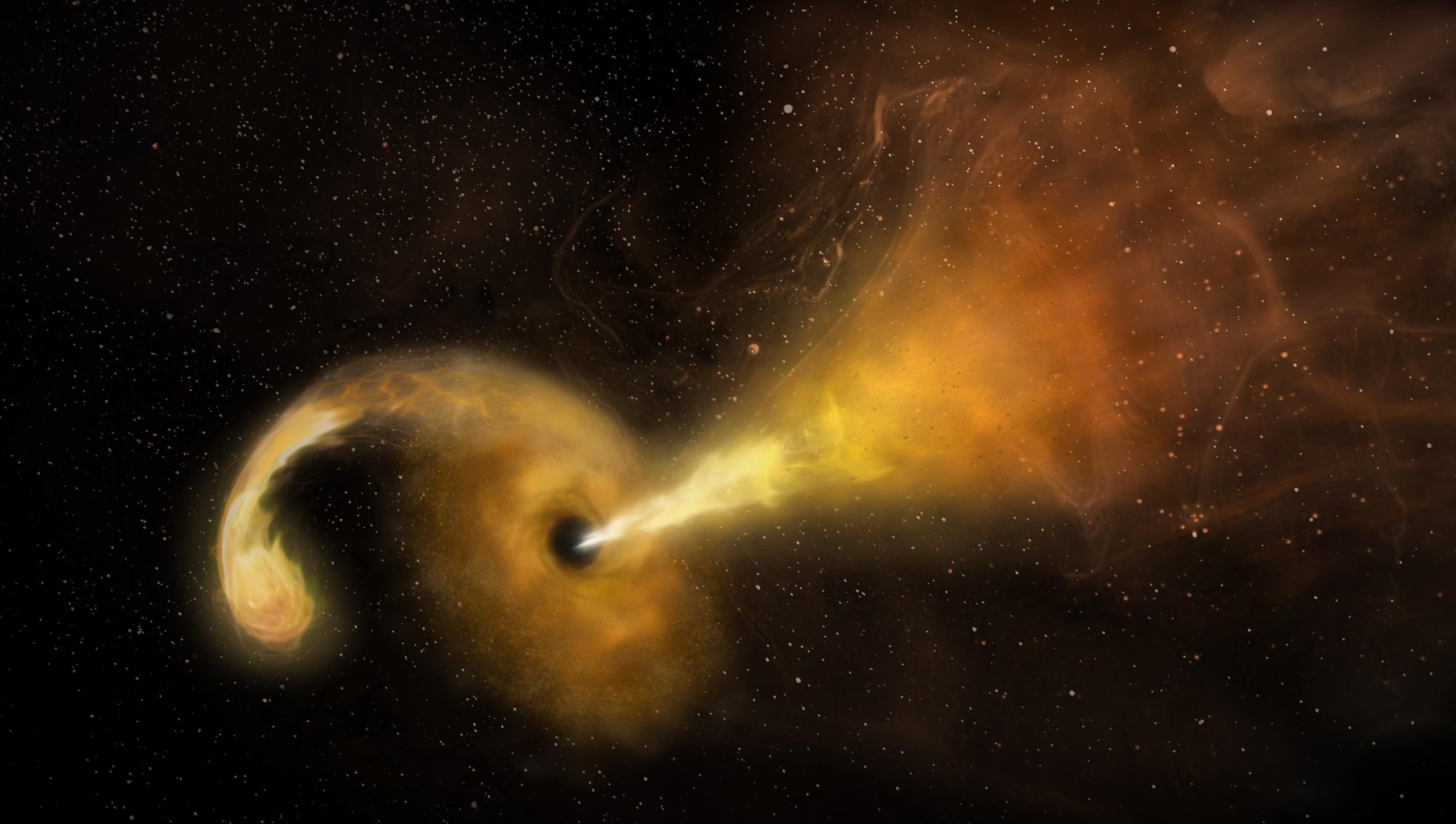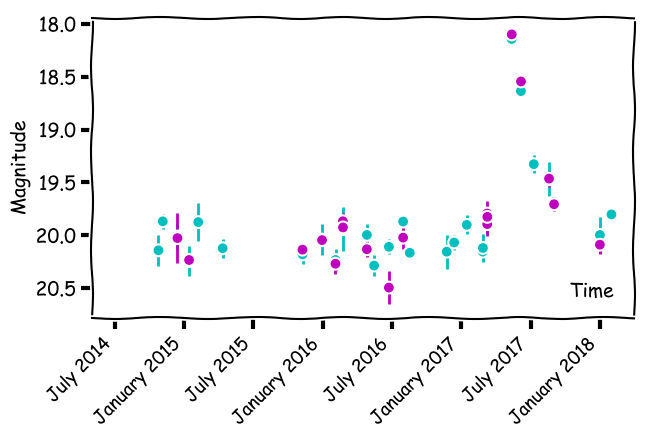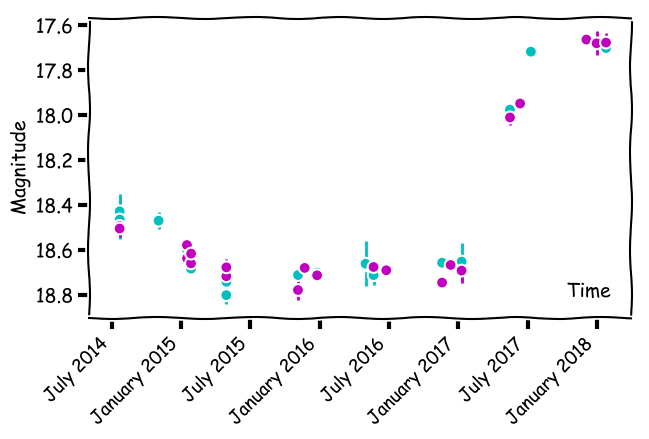Behalve een miljard sterren in onze Melkweg observeert ESA’s Gaia-ruimtevaartuig ook extragalactische objecten. Haar geautomatiseerde waarschuwingssysteem verwittigt astronomen wanneer Gaia een plotselinge gebeurtenis—een transient—opmerkt. Een team van astronomen heeft nu ontdekt dat na een aanpassing van het waarschuwingssysteem Gaia honderden opmerkelijke transients in de kernen van sterrenstelsels kan detecteren. Ze vonden ongeveer 480 transients over een periode van ongeveer een jaar. Hun nieuwe methode wordt zo snel mogelijk in het systeem geïmplementeerd, zodat astronomen de aard van deze verschijnselen kunnen bepalen. Publicatie in de november-editie van MNRAS.

In 2013 lanceerde ESA haar Gaia-ruimtevaartuig om de locatie te meten van een miljard sterren in onze Melkweg en tientallen miljoenen sterrenstelsels. Elke positie aan de hemel komt één keer per maand in het blikveld van Gaia; in totaal ongeveer zeventig keer tijdens de missie. Hierdoor kan het ruimtevaartuig plotselinge verschijnselen herkennen, zoals superzware zwarte gaten die sterren uiteenscheuren of sterren die exploderen als supernova. Gaia ziet een verandering in helderheid wanneer het een maand later terugkeert naar hetzelfde stukje hemel. Een team van astronomen van SRON, de Radboud Universiteit en de Universiteit van Cambridge heeft nu bijna vijfhonderd transients gevonden in de centra van sterrenstelsels gedurende een periode van een jaar.
Astronomen Zuzanna Kostrzewa-Rutkowska, Peter Jonker, Simon Hodgkin en anderen doorzochten de Gaia-database op transients rond kernen van sterrenstelsels in de periode tussen juli 2016 en juni 2017. Ze gebruikten een sterrencatalogus—uit de Sloan Digital Sky Survey Release 12—en een op maat gemaakt wiskundig hulpmiddel. Met dit nieuwe hulpmiddel kunnen de onderzoekers zeldzame, lichtkrachtige verschijnselen in galactische centra identificeren. Ze zijn er 480 tegengekomen, waarvan het waarschuwingssysteem er slechts vijf heeft opgepikt.
Het snel waarschuwen van de astronomische gemeenschap is cruciaal voor veel van de geobserveerde gebeurtenissen. Gaia zag bij ongeveer honderd transients niets ongewoons tijdens de maand vóór en de maand na detectie, wat de korte duur aangeeft van de gebeurtenissen die leiden tot een verhoogde emissie van licht. Jonker: ‘Zulke verschijnselen hebben grote waarde omdat astronomen daarmee voor eventjes superzware zwarte gaten kunnen bestuderen die voorheen onzichtbaar waren. Vooral de korte gebeurtenissen kunnen ons wijzen richting tot nu toe ongrijpbare middelzware zwarte gaten die sterren verslinden.’
De belangrijkste verklaring voor de meeste transients is dat superzware zwarte gaten in de kernen van sterrenstelsels plotseling veel actiever worden naarmate er meer gas in het zwarte gat valt, waarbij de omgeving oplicht. Deze verse brandstof kan uit een ster worden gehaald terwijl een zwart gat hem uit elkaar scheurt met zijn enorme zwaartekracht.
Publicatie
Z. Kostrzewa-Rutkowska, P.G. Jonker, S.T. Hodgkin, L. Wyrzykowski, M. Fraser, D.L. Harrison, G. Rixon, A. Yoldas, F. van Leeuwen, A. Delgado, M. van Leeuwen, ‘Gaia transients in galactic nuclei’, Monthly Notices of the Royal Astronomical Society, Volume 481, Issue 1, 21 November


Almost 500 explosions found in galaxy cores
Apart from a billion Milky Way stars, ESA’s Gaia spacecraft also observes extragalactic objects. Its automated alert system notifies astronomers whenever Gaia spots a transient event. A team of astronomers have found out that by tweaking the existing automated system, Gaia can be used to detect hundreds of peculiar transients in the centres of galaxies. They found about 480 transients over a period of about a year. Their new method will be implemented in the system as soon as possible allowing astronomers to determine the nature of these events. The findings will be published in the November issue of MNRAS.
In 2013, ESA launched its Gaia spacecraft to measure the location of a billion stars in our Milky Way and tens of millions of galaxies. Each position on the sky enters Gaia’s view once every month, for a total of about seventy times during the mission. This allows the spacecraft to spot transient events, such as supermassive black holes ripping stars apart or stars exploding as a supernova. Gaia will notice a change in brightness when it returns to the same patch of sky a month later. A team of astronomers from SRON, Radboud University and the University of Cambridge now find nearly five hundred transients occurring in the centres of galaxies over a period of one year.
Astronomers Zuzanna Kostrzewa-Rutkowska, Peter Jonker, Simon Hodgkin and others searched the Gaia database for transient events around the nuclei of galaxies in the period between July 2016 and June 2017. They used a galaxy catalogue—from the Sloan Digital Sky Survey Release 12— and a custom-made mathematical tool. The new tool allows the researchers to identify rare luminous events coming from galactic centers. They dug up 480 events, of which only five were picked up before by the alert system.
Rapidly alerting the astronomical community is key for many of the events found. For about one hundred transients nothing out of the ordinary was observed by Gaia the month before and the month after detection, indicating that the event leading to the enhanced emission of light was short. ‘Such events have great value because they could allow astronomers to study for a brief period previously invisible supermassive black holes,’ says Jonker. ‘Especially the short-duration events could point us to the location of the so far elusive intermediate-mass black holes ripping stars apart.’
The leading explanation for most events is that supermassive black holes residing in the nuclei of galaxies suddenly become much more active as the amount of gas falling into the black hole surges and lights up the close environment of the black hole. This fresh fuel may be extracted from a star which is ripped apart by the enormous gravitational pull of the black hole.
Zuzanna Kostrzewa-Rutkowska, Peter Jonker and others from their group have recently started a dense campaign to decipher the nature of the 480 new transients using the La Palma-based William Herschel Telescope.
Publication
Z. Kostrzewa-Rutkowska, P.G. Jonker, S.T. Hodgkin, L. Wyrzykowski, M. Fraser, D.L. Harrison, G. Rixon, A. Yoldas, F. van Leeuwen, A. Delgado, M. van Leeuwen, ‘Gaia transients in galactic nuclei’, Monthly Notices of the Royal Astronomical Society, Volume 481, Issue 1, 21 November




